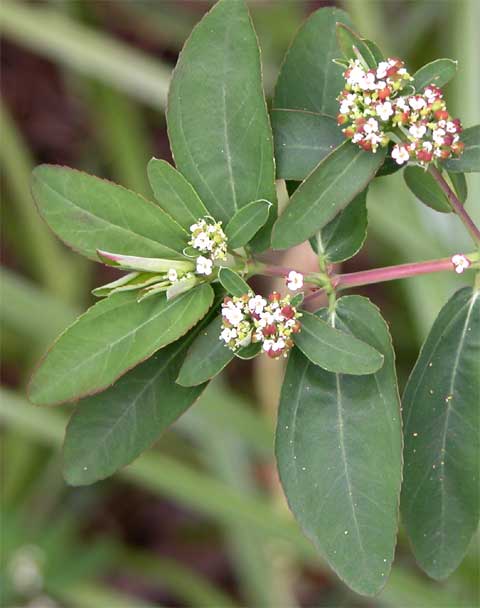
Habit [Top]
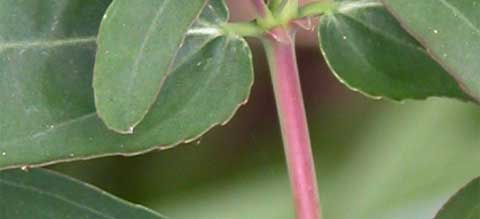
Stem [Top]
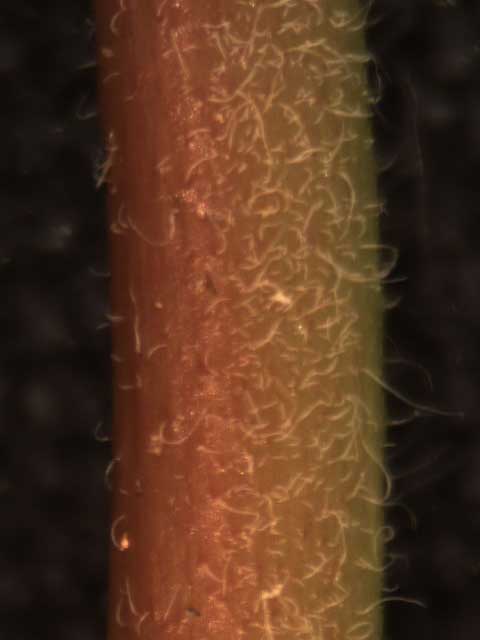
Stem [Top]

Abaxial leaf surface [Top]
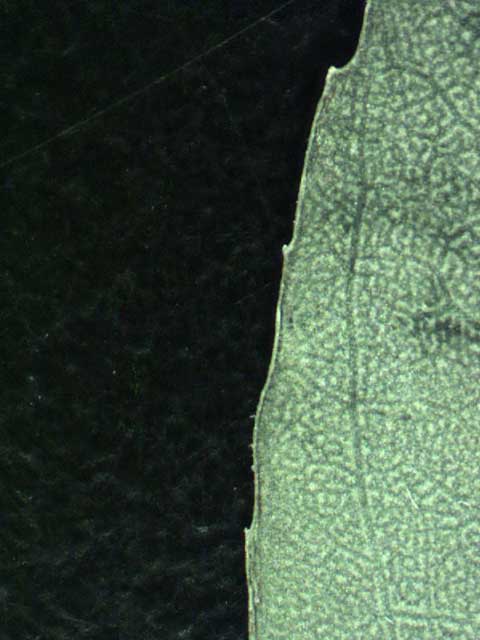
Leaf margin [Top]
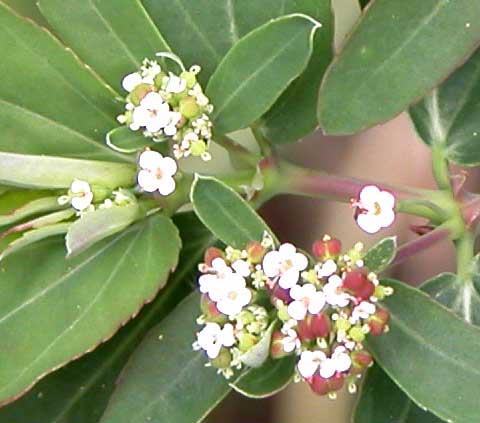
Flowers [Top]
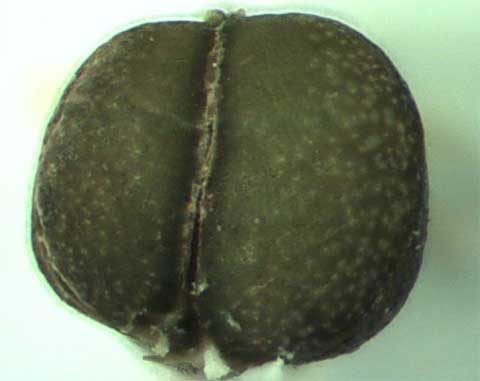
Fruit [Top]
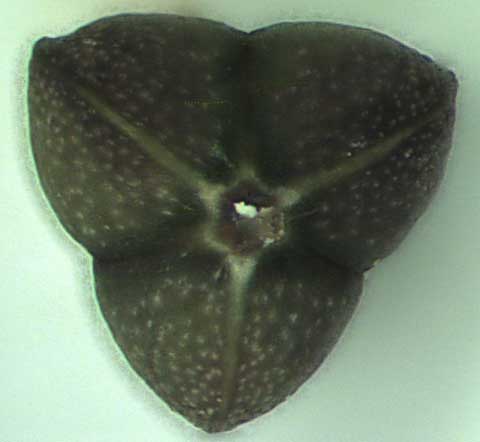
Fruit [Top]
Herbicide Effectiveness [top]
Key to Rankings
Barricade/Regalkade
G
Broadstar
G
Gallery
F
OH2
G
Pennant Magnum
?
Pendulum
G
Regal OO
F
Ronstar
F
Rout
G
Showcase
?
Snapshot TG
F
Surflan
F
Treflan
P
Description [top]
Spurges (Chamaesyce spp., Euphorbiaceae) are summer annual weeds that flourish in warm weather, but in warmer climates some can persist into late fall. Plants flower in summer and early fall then die after frost. Flowers are greenish-white. Spurges are some of the most common warm-season weeds in container nurseries. Various species are important in different nurseries because of different weed introductions, production practices, and weed management strategies. Each exudes a milky sap when stems or leaves are broken.
Control Guidelines for Spurges: Because spurges flower when young and have little or no seed dormancy, weed populations can increase rapidly. Remove plants when young to reduce seed production. They are time consuming to hand weed due to the number of seedlings that form. Some species may forcefully discharge seeds. Spurges are well controlled by most preemergence nursery herbicides containing a dinitroaniline, but less well controlled by oxadiazon or oxyfluorfen.
Nodding spurge (Chamaesyce nutans): This species is very similar to hyssop spurge but leaves are generally larger and younger foliage is softly hairy, losing hairs with age. Preliminary research suggests that nodding spurge is generally well controlled by most herbicides that list “spurge” as a susceptible species. [TOP]